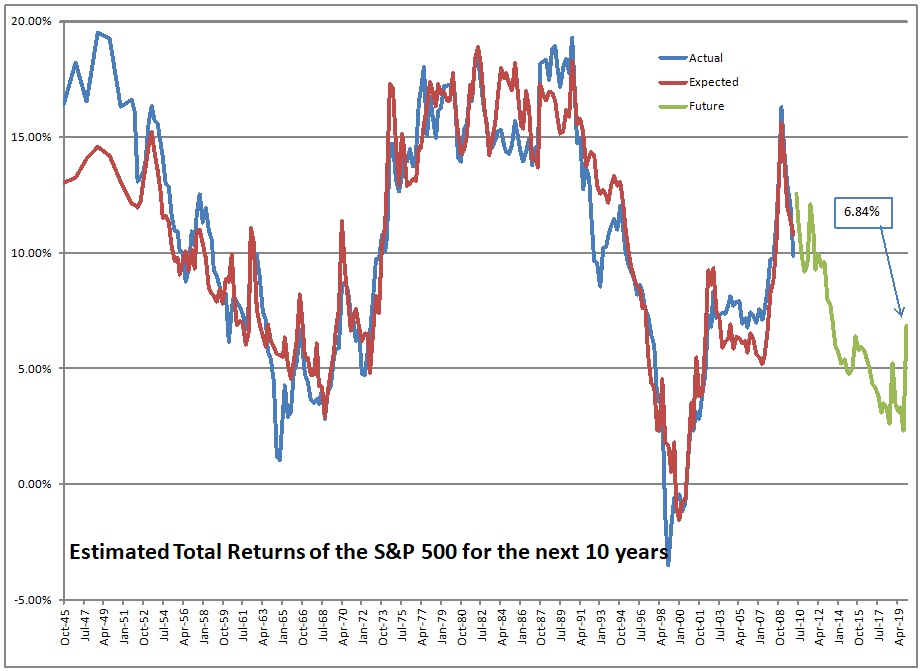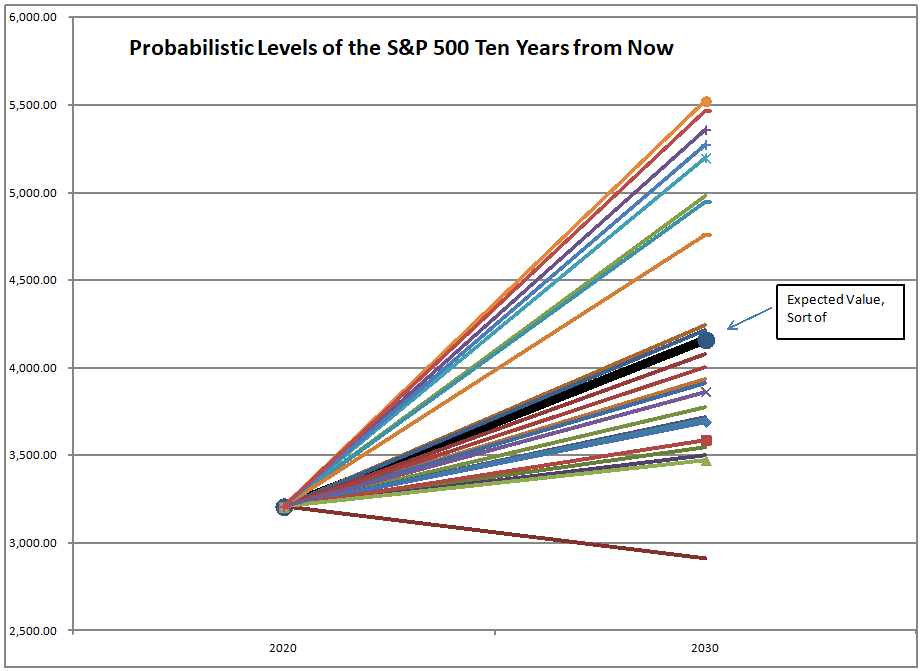Only a Trickle
Photo Credit: Sarah Burget || Future returns of the S&P 500 will only be a trickle
Dear friends, after some time away, this will be a short post, though I hope to write more soon.
The S&P 500 model is forecasting returns of 2.23%/year over the next 10 years. Even if you compare that to the 10-year Treasury Note yielding 0.66%, that’s not enough of a risk premium. We are in the 97th percentile of valuations.
Now, I know that the Fed is encouraging this. Somewhere, maybe from Bernanke, they picked up the bad meme that the Fed should care about the stock market.
Let me tell you that that way lies madness. The Fed is banging hard on the “voting machine” aspect of the stock market, while the “weighing machine” quietly looks on saying, “You’re going to pay for this.”
Let me put it bluntly: Quantitative easing and policies like it are just blowing asset and debt bubbles. Can the Fed create conditions that lever up the economy, and create prosperity in the asset markets? Yes, but only for a time. Eventually, the markets begin to look through the actions of the Fed and the US Treasury and conclude that the emperor has no clothes. Gold is the silent witness in these matters, as is the value of the US Dollar to a lesser extent.
The Fed should only care about the solvency of the financial system, and act to avoid bubbles. Forget inflation, forget employment forget real GDP growth. In an open macroeconomy where there is a lot of technological change, the Fed can’t affect any of those much. If you are going to have a central bank, it should focus on avoiding financial crises.
And since Greenspan, the Fed has done the opposite of that. Instead of letting recessions liquidate bad debts, the Fed has “rescued” bad corporate and household decisions, by lower rates continually. Well, now we are near the end of this game, and current interest rates and likely future returns are lower than any other time than the dot-com bubble.
For investors, there are a few choices. Go low debt in stock selection, and look at small stocks, value stocks. and international stocks. All offer more future returns than the current FANGMAN consensus of largest-cap growth. Also, even though bond yields are low, short duration high quality bonds will lose a lot less in a panic than other assets.
That is what I am doing. You can do what you want, but this i a time to pay more attention to preserving capital, because even under the best conditions, you aren’t going to earn much in large cap US stocks over the next 10 years.












